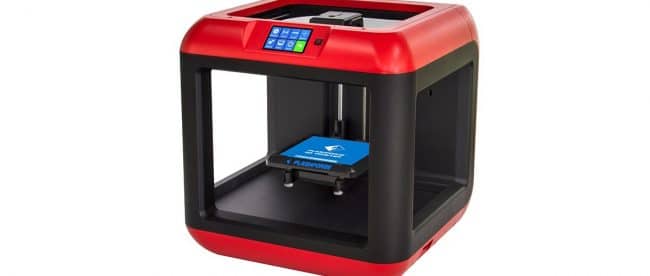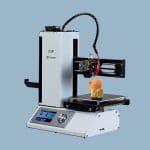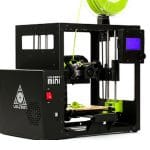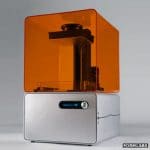Printer Review – Flashforge Finder
If you’re interested in 3D printing, but haven’t taken the plunge and bought yourself a printer yet, this is actually a really good time to do it (and not just because Christmas gives you an excuse). The technology is developing fast enough, and there are enough companies trying to establish themselves in the market, that new models are coming out all the time.
Some of those new models are amazing, and we’ll be taking a look at a few over the next month or so, but if you want to try 3D printing for the first time you might actually be better off skipping them. That’s not to say there’s anything wrong with them – there isn’t. Look at how new electronics work; compared to last year’s model, this year’s is faster, more compact – and cheaper.
So, what do retailers do with their remaining stock of last year’s model? Often they drop the price so it’s cheaper than the latest ones, and that means you can pick up some real bargains. For less than the price of an entry level printer you should be able to pick up one that was mid-range two years ago. You’ll often find these have extra features or better performance – they’re just not the latest design.
A great example of this is the Flashforge Finder. This has been on the market for three or four years now, and when it first appeared it cost anywhere up to around £400. The price has been falling steadily since then, and you can now pick one up for about £260. It might not be the newest printer around, but at that price it’s a really tempting buy.
What’s it like?
The first thing that makes the Flashforge Finder ideal for a new enthusiast is that it comes fully assembled out of the box. That’s becoming common now, but when this printer first appeared the norm was that you had to do quite a bit of assembly yourself. Being able to take it out the box, plug it in and get to work was a nice feature then – and it still is.
Ease of use was obviously a focus for the Finder’s designers. The build plate slides on and off easily, so it’s simple to get your project out of the machine when it’s finished. The printer is controlled through an intuitive touch screen that can be set up in 16 languages. It also has an assisted levelling feature that makes it easy to get good results even if you don’t have any experience in levelling plates.
In fact the Flashforge Finder is so simple that it’s ideal for kids, too. The design helps with this. There’s no exposed wiring; everything is stowed away inside the colourful square plastic case. The extruder is shrouded, so curious little fingers won’t get burnt on its hot nozzle, and there are no sharp edges around to snag anything.
In case you were wondering, performance doesn’t suffer at all. The build area is a little limited, at 140x140x140mm, but that’s enough for most projects anyway, and your prints will come out looking crisp and clean. The glass print bed is small enough that its lack of heating isn’t really an issue. One area where the Finder scores really well is on reliability; it’s very good at feeding filament, with no breaks or blockages.
The Flashforge Finder has a very neat built-in filament holder, but it only takes 0.6kg spools. These work out more expensive than larger ones, but you can easily buy or print an external spool holder for it. You can send files to the printer via a USB cable, ethernet or WiFi, and it can be directly loaded from a USB memory stick too. Finally, the Finder is very quiet – it runs at or below 50db, so it isn’t going to disturb you while it prints.
Verdict
If you’re looking for an excellent entry-level family printer, with good performance at a great price, this is definitely one to consider.








Leave a comment
You must be logged in to post a comment.